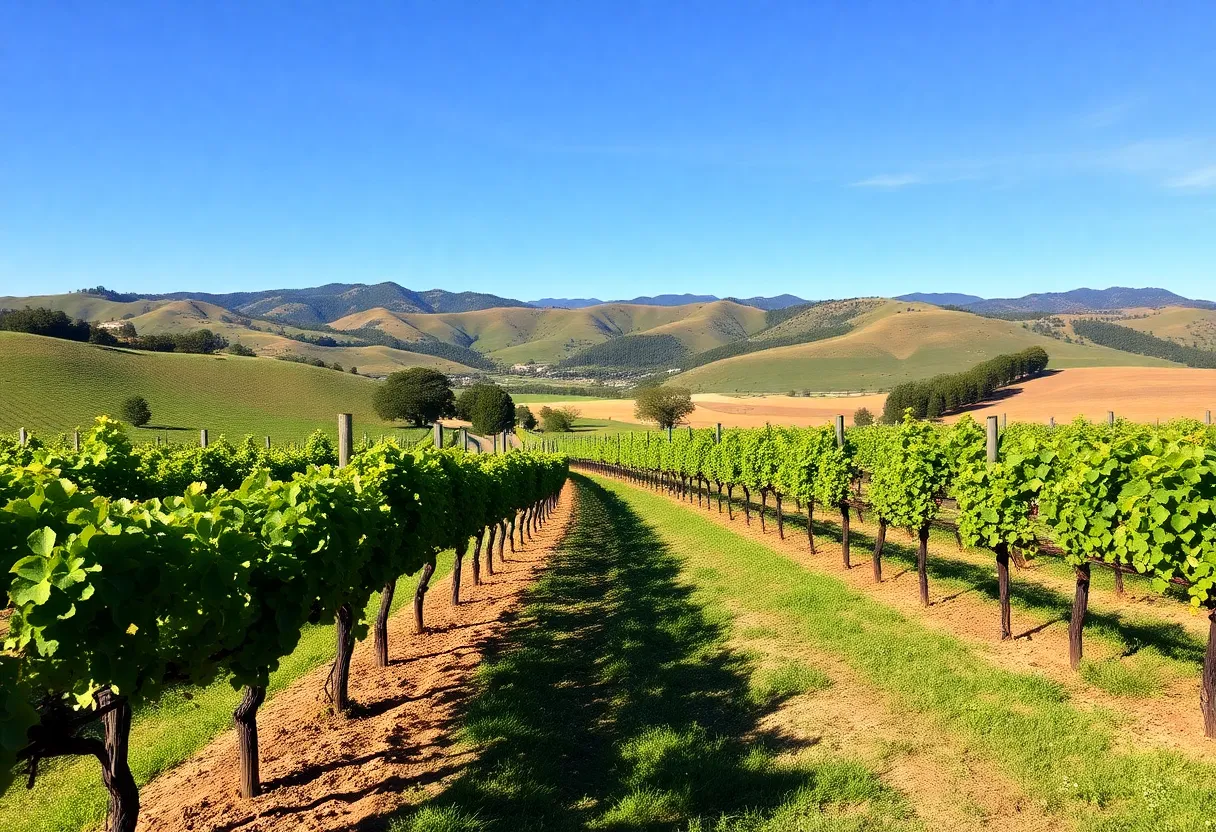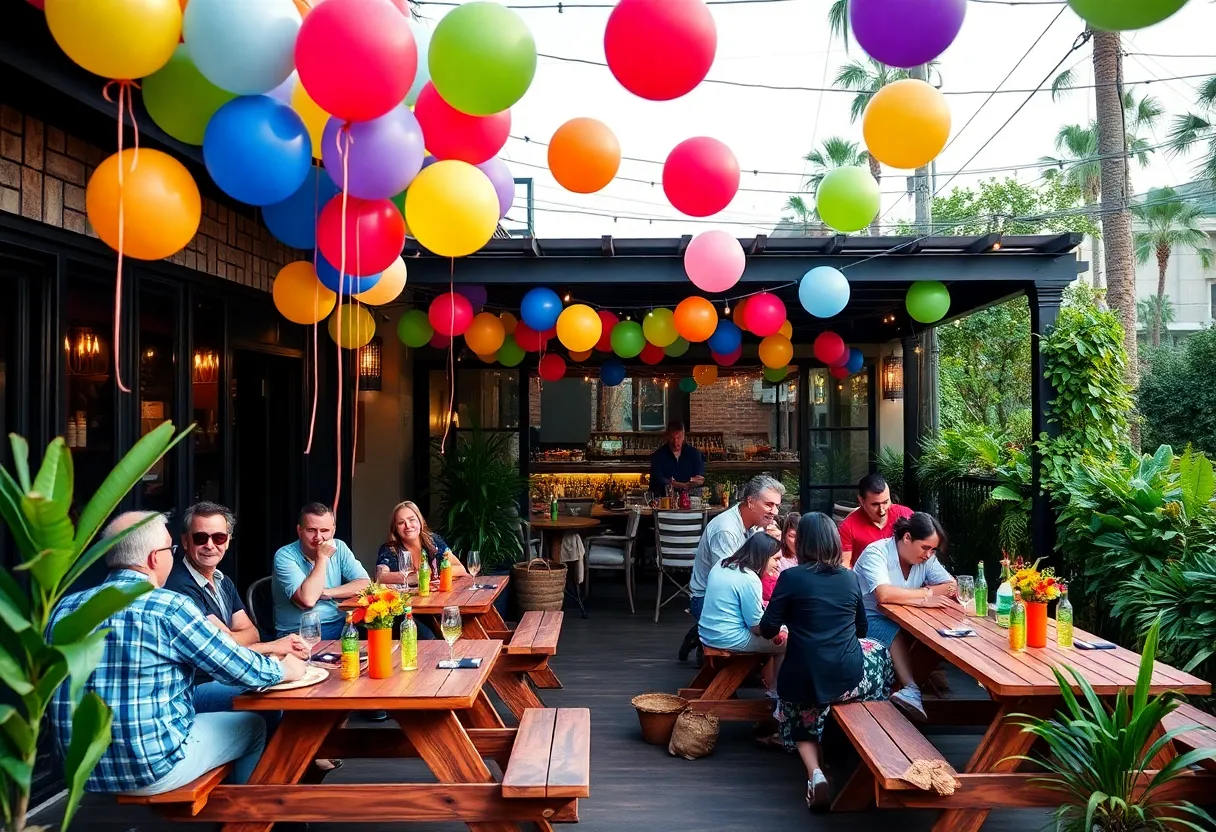News Summary
The wine industry in Santa Barbara County is navigating both challenges and opportunities. As overall alcohol consumption declines in the U.S., small California winemakers hope President Trump’s tariff strategies may provide a boost. These tariffs could level the playing field against foreign competitors and encourage domestic wine tourism. However, rising production costs and changing consumer preferences pose significant risks. A cautious optimism prevails as local producers adapt to the evolving landscape of California winemaking.
Santa Barbara County: A Glimpse into the Future of California Winemaking
The picturesque landscape of Santa Barbara County is known for its enchanting vineyards and mouthwatering wines. However, the industry here, like many others across the U.S., is navigating a unique landscape of challenges and opportunities. While the overall alcohol consumption is taking a dip in the country, small California winemakers are holding out hope that President Trump’s tariff strategies might just give them a much-needed boost in the coming years.
Shifting Trends in Alcohol Consumption
It’s no secret that less wine is being poured across dining tables in America. The decline in alcohol consumption has various reasons—changing consumer preferences, health trends, and the aging Baby Boomer demographic. What does this mean for local wine producers? Smaller vineyards, in particular, are feeling the crunch but also see potential for a silver lining.
Trump’s Tariffs and Their Anticipated Impact
President Trump’s tariff strategies have stirred up a whirlwind of discussions in the economic landscape, particularly with a blanket 10% on all imported goods and a hefty 20% on major wine importers like Italy and France. While some critics argue that these tariffs are detrimental to the economy, small winemakers are cautiously optimistic, viewing it as a chance to revive their fortunes. If all goes well, by 2025, these domestic producers might gain traction against their global competitors.
A Level Playing Field for Local Vintners
The oversupply of wine in the U.S. market has been a persistent issue over the past few years, mixed in with a growing influx of global imports. The hope is that these tariffs will level the playing field somewhat, allowing small California vintners to compete more effectively against foreign wines. While the ultra-premium segment might not see massive benefits—since their clientele often have the budget and inclination to continue purchasing imported wines despite rising prices—lower-tier local producers could catch a break.
A New Wave in Wine Tourism
The marriage of California’s stunning landscape and rich wine culture is a significant draw for tourists. With economic pressures influencing consumer spending, experts suggest that Americans may shift their focus from pricey European vacations to exploring the local wine scene instead. This could lead to a renaissance for mid-range California varietals, particularly those marketed directly to consumers.
Rising Costs vs. Emerging Opportunities
However, it isn’t all smooth sailing. Mid-range wine producers may face rising production costs due to tariffs on imported materials used in winemaking, such as barrels and glass. In a market complicated by declining demand for wine, some growers have already taken the drastic step of cutting back their acreage—around 60,000 acres have been removed from production in the last two years, showcasing the seriousness of the situation.
Global Impact and Local Outlook
The intricacies of the global market have also come into play. While some domestic products might gain popularity, there are concerns that the proposed 200% tariff on European wines could hurt American winemakers as well. It’s a double-edged sword, and producers are watching the situation closely.
Despite these challenges, the potential for local wines to seize market share is palpable. Many anticipate that consumers may gradually prefer local options to more expensive imports, especially amidst changing economic realities. California stands as the powerhouse of U.S. winemaking, producing about 81% of the country’s total wine and contributing significantly to the local economy.
Looking Ahead
Overall, while the U.S. wine industry faces several hurdles including changing consumer preferences and the uncertainties of tariffs, there’s an air of cautious optimism in Santa Barbara County and beyond. The coming years may indeed bring opportunities for smaller California wineries to reclaim their spot in the hearts and glasses of American consumers, all while adapting to a landscape that has changed dramatically over the past few years.
Deeper Dive: News & Info About This Topic
- Business Insider: Trump Tariff Impact on Small California Winemakers
- CBS News: Trump Tariffs and Higher Prices
- Moneywise: California Wineries Slammed by Tariffs
- CNN: Tariff Impact on California Wine Industry
- Axios: Tariffs and California’s Wine Industry
- Wikipedia: Wine Industry in California
- Google Search: California Wine Tariffs
- Google Scholar: California Wine Industry
- Encyclopedia Britannica: Wine
- Google News: California Winemaking

Author: STAFF HERE HOLLYWOOD
The Hollywood Staff Writer represents the experienced team at HEREHollywood.com, your go-to source for actionable local news and information in Hollywood, Los Angeles County, and beyond. Specializing in "news you can use," we cover essential topics like product reviews for personal and business needs, local business directories, politics, real estate trends, neighborhood insights, and state news affecting the area—with deep expertise drawn from years of dedicated reporting and strong community input, including local press releases and business updates. We deliver top reporting on high-value events such as the Hollywood Bowl summer concerts, the Hollywood Christmas Parade, film premieres at TCL Chinese Theatre, and festivals at the Magic Castle. Our coverage extends to key organizations like the Hollywood Chamber of Commerce and Visit Hollywood, plus leading businesses in entertainment, dining, and tourism that define the local economy. As part of the broader HERE network, including HERELosAngeles.com, HEREBeverlyHills.com, HEREAnaheim.com, and HEREHuntingtonBeach.com, we provide comprehensive, credible insights into Southern California's dynamic landscape.





